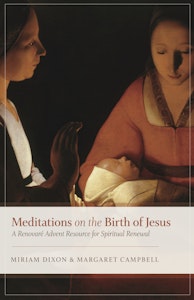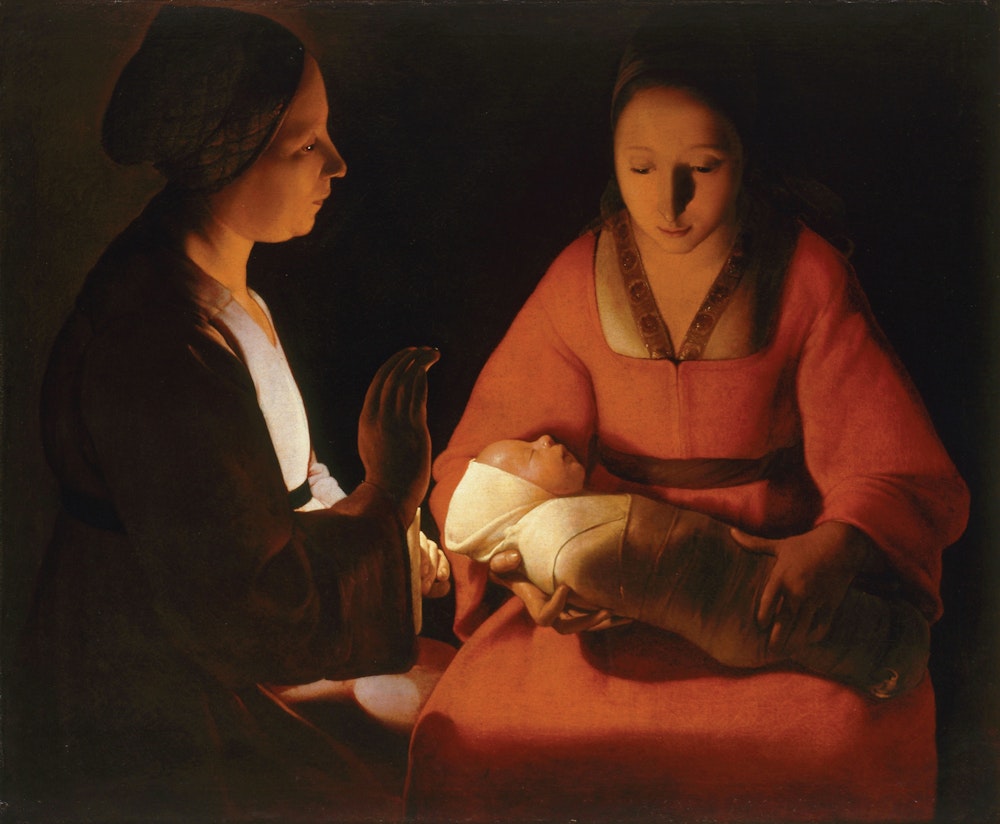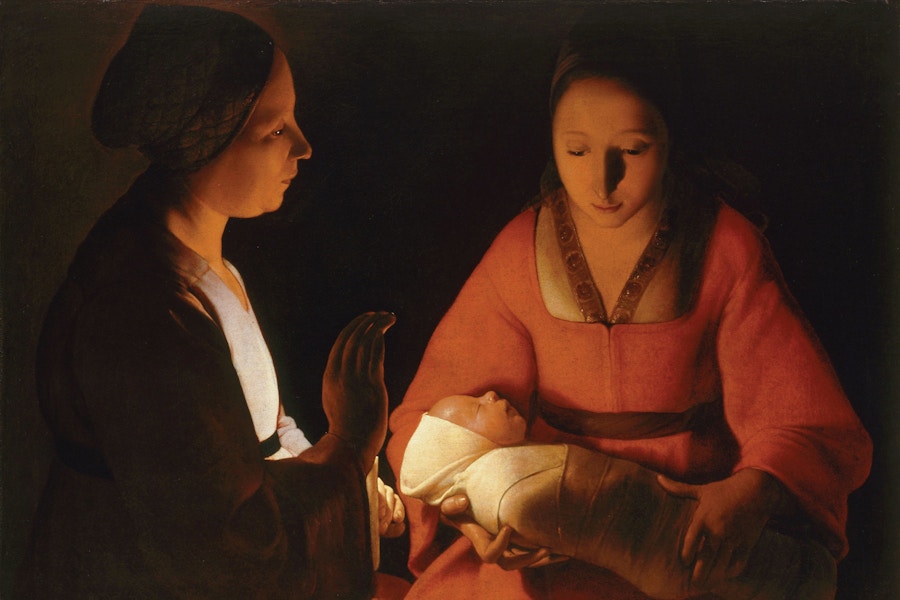 Excerpt from Meditations on the Birth of Jesus
Excerpt from Meditations on the Birth of Jesus
Recommended passage for Lectio Divina: John 1:1 – 18.
Imagine a time before time, when reality is defined by light, color, and beauty. At the center is a triune Being who is the Artist and the Palette and the Studio. With broad strokes the Originator crafts a universe of galaxies and stars. Then a smaller brush is taken up and extravagant details painted into a single garden planet, an emerald and sapphire sphere flowering and flowing and teeming and trilling with life. It is breathtaking, but there is no one around whose breath can be taken. It is time now for the Maker’s magnum opus—a sculpted self-portrait animated by the breath of life. The members of the Trinity intend to share with these image-bearers the intimate fellowship they themselves have eternally enjoyed. It is very good.
But something goes terribly wrong. The creatures rebel. Darkness enters the world, a darkness which attempts to overshadow the Life that is the light of all humankind.
The scene is bleak. A mind-set of scarcity has taken root which manifests in corporate behavior. People feel vulnerable; they are afraid; they build walls to shut others out. God’s grand experiment is in decay.
How will the Divine Three respond to what they see? What will they do?
“The heart of God is an open wound of love,” says Richard Foster. John illustrates this insight. In a few short sentences, he takes us from the beauty of God’s creation and hope for humanity to the collapse of the dream. Thankfully, God chooses not to crumple and toss aside the spoiled project. Instead, a rescue plan is devised. The Trinity will offer humanity a second chance, a way back. But the God-sized problem will require a God-sized solution. It will require God to absorb the devastation we have released. The hemorrhage we have opened will require the life-blood of God’s own Son to close.
Listening in on this conversation, I recognize myself as the subject of their loving consultation. The realization fills my heart with shame. I am part of the mess. In my thoughts, words, and deeds I have personally participated in the dissolution of God’s intended harmony. I am the reason Jesus came. I am responsible for his suffering and terrible sacrifice.
I throw myself upon the mercy of God in repentance, and hear John declare, “From his fullness we have all received, grace upon grace” (1:16).
What wondrous love is this, O my soul, O my soul.
What wondrous love is this, O my soul.
What wondrous love is this that caused the Lord of bliss
To bear the dreadful curse for my soul, for my soul,
To bear the dreadful curse for my soul.
Use your imagination to hear the voice of Jesus assuring you of his love, of his forgiveness, his salvation.
Hear him invite you to be his disciple and learn from him what a restored relationship with God looks like.
A disciple is a person who reads the words of Scripture prayerfully, entering the stories, listening for God’s personal word. A disciple is a person who speaks often with God in prayer. A disciple is a person who watches what Jesus did to maintain a constant communication with God and then does likewise. A disciple is a person who adopts the practices of Jesus as his or her own. A disciple follows Jesus into the world, lavishing upon others the divine love we have so gratefully received.
Hear the longing of God to be connected to you. It is God’s invitation to enter more deeply into loving fellowship with the Trinity. This is the life that you were designed to live. This is the gift of Christmas.
Dear heavenly Father, Lord Jesus Christ, indwelling Holy Spirit — we are homesick for you. Thank you for planting in every human heart this desire and capacity to respond to you. You have pursued us with love. In sending Jesus to provide salvation, you have lavished kindness upon us. You always call us home — feeding our hunger, satisfying our thirst. Thank you for drawing us into this fresh experience of Advent. Come to us anew, Lord Jesus; make your home in our willing hearts. Amen.
Visio Divina
Spend a period of time in personal reflection on the artwork below. You may find these steps of Visio Divina helpful:
- Request. Ask God to guide your thoughts and impressions through the Holy Spirit.
- Gaze. Take in the painting. Notice its structure, the placement of the people and objects in the artwork, the shape and form, the use of light and shadow, the empty spaces. What catches your attention?
- Reflect on what you see. Pay attention to your impressions, thoughts, and feelings. How does the image deepen your understanding of the text?
- Respond and Receive. Carry the details of the image with you through the coming week in the way you might carry a word from Lectio Divina with you. You may find that God is inviting you to pray as the appropriate response to what he has shown you. What is God’s invitation? Receive what God has shown you and rest in a posture of obedience and devotion.

During the seventeenth century, the French painter Georges de La Tour painted The Nativity, also titled The Newborn. The sleeping infant is just below the center point of the composition of three figures: the infant, Mary, and Mary’s mother. A single candle shielded from our view lights the scene and focuses our attention on the infant Jesus, the light of the world who casts out the darkness. The white color of the swaddling cloth symbolizes purity. Mary’s red dress prefigures the sacrificial death of Christ. The simplicity of form, color, shadow, and light work together to create an intimate and focused stillness that helps us behold the child with reverent and hopeful expectation.
Going Deeper
- Can you identify with the yearning expressed in John’s description of God’s response to the condition of our world? Try to capture your feelings in a creative way. Write a poem, make a work of art, talk to the Lord while you take a walk.
- Describe your most recent experience of God watering your dried-up hope in an unexpected way.
- Can you think of anyone in your life who needs some kindness? What is one specific way you can bless them this week?
Excerpted from the Renovaré resource Meditations on the Birth of Jesus, copyright 2019 Miriam Dixon and Margaret Campbell. Download it free or purchase physical copies.
Text First Published December 2019 · Last Featured on Renovare.org December 2022



